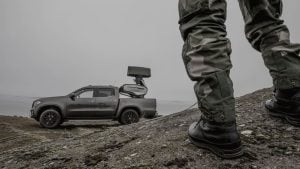Aspirants preparing for the Combined Defence Services (CDS) examination are not just training to become officers; they are preparing to lead in diverse and challenging environments. Among the essential elements of military strategy is understanding the terrain where operations unfold. Karst and glacial landforms, with their unique characteristics and challenges, play a crucial role in shaping military tactics and decision-making. Let’s explore why CDS aspirants should grasp the importance of these geological features.
Karst Landforms:
Karst landscapes, formed through the dissolution of soluble rocks like limestone and dolomite, present a distinct set of features that demand careful consideration in military planning:
- Navigational Complexity: Karst terrains often feature intricate networks of caves, sinkholes, and underground rivers, presenting challenges for navigation and troop movement. CDS aspirants must familiarize themselves with these features to effectively maneuver troops and resources.
- Tactical Advantage: The rugged nature of karst landscapes offers natural hiding spots and defensive positions for military units. Understanding the topography of karst regions is crucial for both defensive operations and planning offensive maneuvers.
- Water Resource Management: Karst areas are known for their complex underground water systems, including aquifers and subterranean rivers. Controlling access to these water resources can be strategically significant during military campaigns, highlighting the importance of understanding karst hydrology.
- Logistical Considerations: The irregular surface morphology of karst regions, characterized by sinkholes and abrupt changes in terrain elevation, presents logistical challenges for military operations. Planning supply routes and infrastructure requires careful assessment of these terrain features.
Glacial Landforms:
Glacial landscapes, sculpted by the movement of glaciers over millennia, offer a unique set of challenges and strategic opportunities for military planners:
- Terrain Influence: Glacial landforms, including U-shaped valleys, moraines, and cirques, shape the landscape in ways that can influence military movements. CDS aspirants must recognize how glacial terrain can affect troop deployment and maneuverability.
- Strategic Positions: Glacial valleys often create natural barriers and elevated positions that are strategically significant. Understanding the terrain features shaped by glaciers helps in identifying vantage points for surveillance, artillery deployment, and strategic positioning of troops.
- Water Resource Security: Glacial meltwater contributes significantly to freshwater resources, particularly in mountainous regions. Control over glacial-fed rivers and lakes is essential for ensuring water security during military campaigns conducted in these areas.
- Climate Change Impacts: Glacial recession due to climate change alters landscapes and can affect military operations in glaciated regions. CDS aspirants should understand the long-term implications of glacial retreat on terrain stability, access routes, and water availability.
In conclusion, a comprehensive understanding of karst and glacial landforms is indispensable for CDS aspirants preparing to lead in diverse terrains and challenging environments. By recognizing the strategic significance and complexities of these geological features, future officers can enhance their preparedness to navigate and operate effectively in varied landscapes.


















